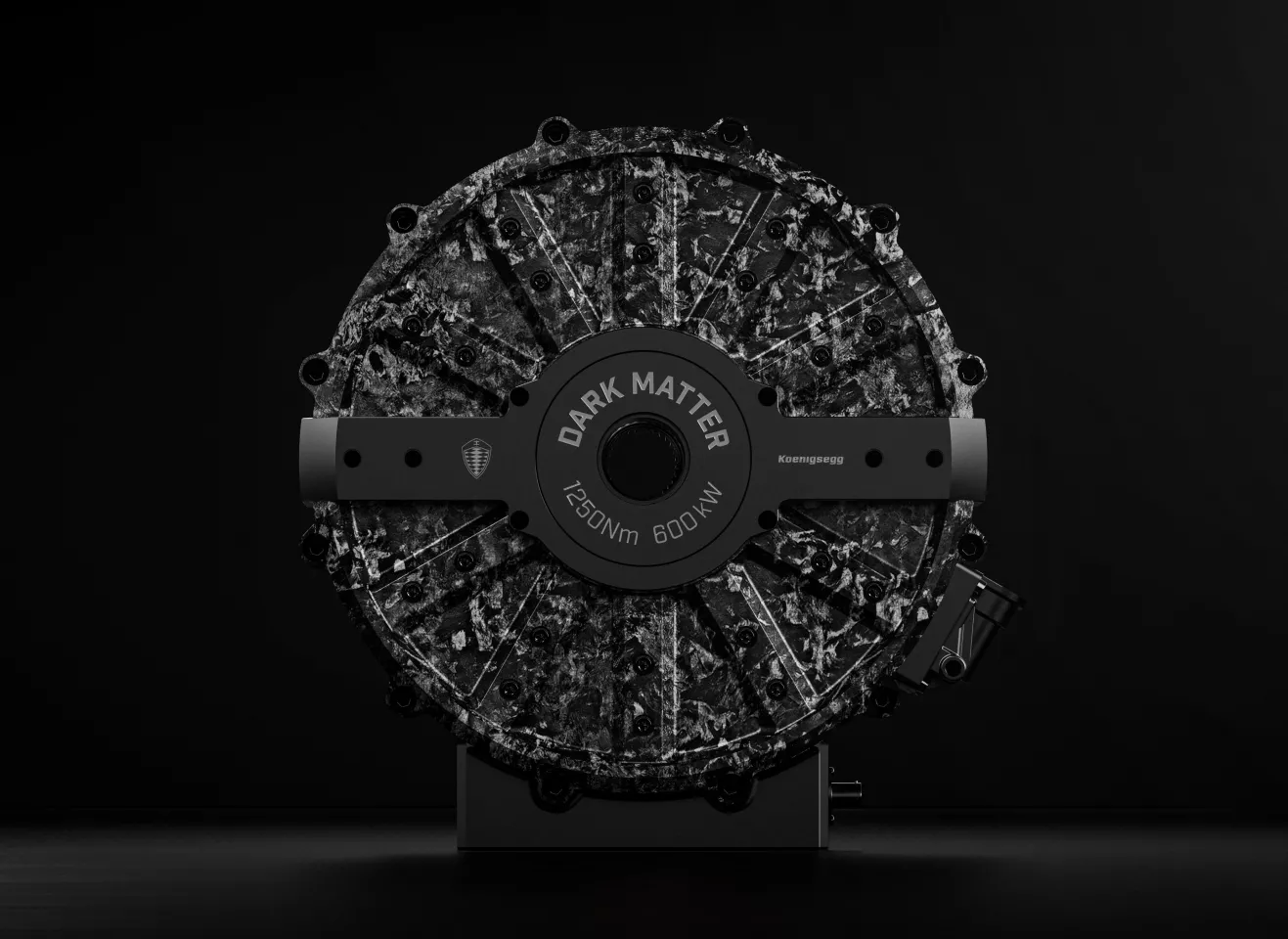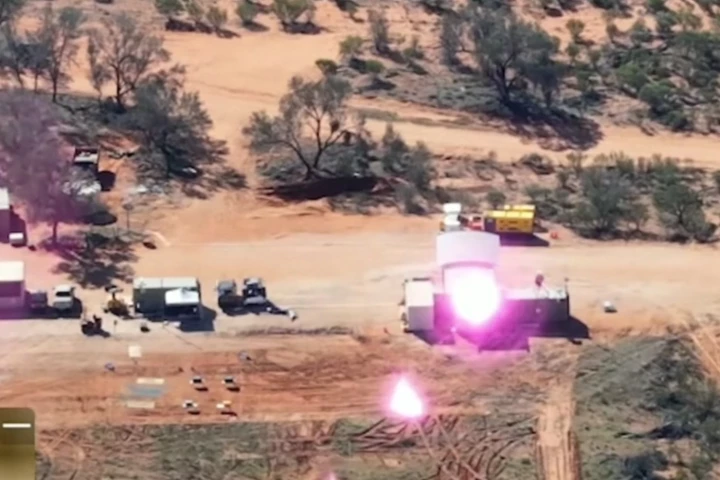There's no replacement for displacement. An adage that's been around as long as the combustion engine, really. But these age-old sayings don't really apply anymore when it comes to electric motors.
Earlier this year, we talked about Koenigsegg's Light Speed Tourbillon Transmission (LSTT). We explored how it couples the 5-liter, 1,500 horsepower (1,119 kW), 1,106 lb-ft (1,500 Nm) of torque, "Hot V8" engine shoed into the rear of the Gemera hypercar and the 850-volt Dark Matter electric motor mounted in the front – but we never got into the specifics of this insane electric powerplant and what makes it so remarkable.
Unveiled in 2023 and stuffed into the Koenigsegg Gemera, the Dark Matter motor created an entirely new league of high-performance electric motor that didn't quite exist before. Most of its details are still hidden away in a secret Koenigsegg vault while awaiting patent protection.
The Dark Matter weighs a mere 86 lb (39 kg) and delivers 800 hp (600 kW) with 922 lb-ft of face-melting torque (1,250 Nm) and a max rev of 8,500 RPM.
The entire unit is about 15.1 inches in diameter and 5.3 inches thick (383.3 mm by 135.5 mm). That's not a typo. It's only slightly bigger than a Roomba by an inch and a half (3.8 cm), but with enough power to send the Roomba into low Earth orbit (not really, but it sure seems like it).

The trick to this ridiculous EV motor is a "little bit" of carbon fiber and a six-phase "raxial flux" design – a fusion of radial and axial flux principles used in electric motors, and a word Koenigsegg coined that didn't even exist in automotive terms before.
The radial flux design isn't just the most common type of EV motor, it's in nearly everything that uses an electric motor. From a drill to an RC car. The shape of the motor is often long with a relatively smallish diameter. The rotor – with its magnetic flux lines pointing outward from the axle – spins inside the housing at high RPM. It's the design you'll find in a Tesla Plaid – Tesla's fastest and most powerful offering. A single Plaid motor makes about half as much horsepower and weighs roughly 20 lb (9 kg) less than the Dark Matter (though the Plaid comes equipped with three of them).
Axial flux, on the other hand, tends to have a much larger diameter, shaped more like a pancake. The magnet forces are parallel to the axle, making them rev slower but produce more torque.
Koenigsegg has incorporated both radial and axial flux into the Dark Matter.
"Mostly axial, with a bit of radial flux," Christian von Koenigsegg told MotorTrend. Meaning that most of the power from Dark Matter is produced with the axial flux aspect of the motor, with the radial part just chipping in a little extra.
You may have read "a little bit of carbon fiber" above, but in reality, nearly the entire motor is made of the material, including its rotor and stator structures. Instead of stacks of laminated steel plates holding everything together as with traditional motor design, Koenigsegg is the first to use carbon fiber structures. Pricey, indeed, but we're talking Koenigsegg here, where its most "economically priced" car, the Gemera, is US$1.7 million.
I also mentioned Dark Matter's unique 6-phase power setup earlier: Traditionally, EV motors use 3-phase power, where three alternating currents are thrown at the motor 120 degrees out of phase. Like three fun pushes of power per revolution. Koenigsegg doubled that figure, with two sets of 3-phase power at 30-degrees offset – that's six extra fun pushes of power per revolution. In doing so, the Dark Matter has a smoother torque delivery with lower torque ripple (that pesky clunky, hiccup-like chug that electric motors can sometimes do when trying to spin up) and has the added benefit of running cooler at a lower current.

Koenigsegg only uses a single Dark Matter motor in the Gamera, mounted in the "Bulldog" front axle. The other 1,500 hp (1,119 kW) come from the 5-liter "Hot V8" in the back of the car. If you missed the Light Speed Tourbillon Transmission before, now would be a great time to see how Dark Matter works with the rest of the car.
The moment Koenigsegg (or anyone, for that matter) releases video or images of the super-secret internal bits of a Dark Matter e-motor, you can rest assured, knowing that we'll post an update to this beautifully carbon-fiber-packaged monster.
As an aside, if we took a trip down Apples to Oranges Lane, a nicely-massaged 454 (7.4 liter) Chevy big block could put up 800 hp (596 kW) with roughly 800 lb ft torque (1,085 Nm) numbers. Conservatively, you could probably eke six to eight miles per gallon (roughly 30–40 L/100 km) out of that rumbly 700-lb motor (317 kg). Chances are it would be stuffed into a 1970s-era Chevelle or a slick '69 Camaro.
Imagine what a Dark Matter would be like in a chassis like that. Too bad they're not for sale.
Source: Koenigsegg






